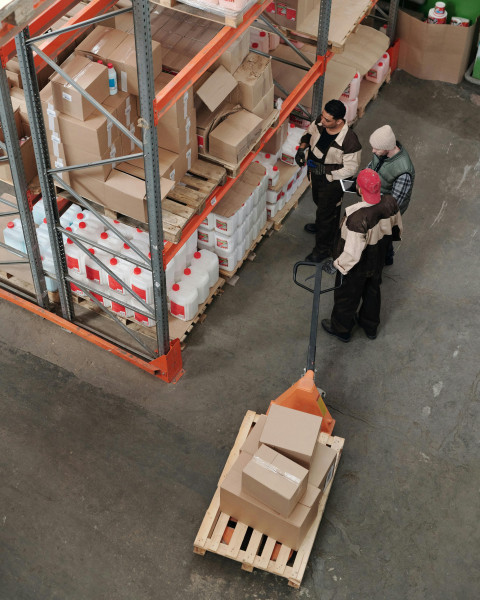Businesses should focus on strategic and systematic ways to take advantage of the possibilities afforded by the metaverse, proposes LUT Business School’s recent study titled The Metaverse Flywheel: Creating Value across Physical and Virtual Worlds.
Metaverse refers to interactive digital and virtual worlds where users can interact with different digital objects and with each other, utilizing technologies such as virtual and augmented reality, but also commonplace handheld or desktop devices.
Professor Paavo Ritala expects that both our professional and private lives will increasingly occur in digital environments and partly even within virtual realms.
”We are witnessing a gradual transition towards virtual reality in all domains of society and business. What we have observed in multiplayer gaming will also extend to other areas of life,” Ritala says.
A study by LUT Business School and Umeå University identified three key possibilities for utilizing the metaverse in business.
Three key affordances
The study by Ritala, Industry Professor Mika Ruokonen and Assistant Professor Angelos Kostis is based on interviews with early metaverse adopters and innovators. The study identifies three key affordances – unique opportunities and possibilities – of the metaverse:
1 Prospection: The creation and development of facilities and realities in a virtual environment. This helps users to prepare for possible unknown or unexpected situations and scenarios. It is often more cost-efficient to plan important projects virtually before executing them in practice (e.g., large construction projects).
2 Persistence: Editable, evolving, and continuously available digital environments. Optimally, virtual environments could provide a setting for creating models, objects, and user identities which help address practical challenges in work and business.
3 Integration: The integration of virtual experiences and ideas into the physical world and vice versa. This can lead to better user experiences, savings, and the development of new products and innovations.
Even though some companies, such as Meta (formerly Facebook) and Disney, have recently cut back on metaverse investments, the metaverse still provides significant opportunities for both large and small organizations. Researchers expect the metaverse to develop further as technology gradually improves over the coming years and decades. The hype and initial excitement of 2021 have turned into pragmatic development work, and some companies have moved on from pilots to concrete action.
Practical examples of research
The study presents practical examples of how different organizations use the metaverse.

Virtual construction site:
Skanska, a multinational construction company based in Sweden, utilizes the metaverse in the occupational safety training of its employees. A virtual environment enables employees to experience different construction site conditions and risks, which improves their safety awareness and reduces accidents.

Online grocery item collection:
The Jollas Institute, a training center in Helsinki, and 3DBear, a provider of immersive technologies for education, have developed a metaverse environment where newly recruited employees can practice the item-collection process before going to the actual warehouse or shop floor. This virtual training environment improves the learning process and decreases the risk of errors.

Real estate infrastructure:
A real estate infrastructure operator uses the metaverse for building architectural design templates of how a real estate facility will look in the future and for improving its ongoing real estate operations. Virtual models and simulations help optimize the use and maintenance of buildings throughout their life cycle.

Tourism in Helsinki:
The City of Helsinki has partnered with Zoan, a local virtual solutions developer company, to launch several virtual solutions to boost its marketing and communications. Virtual models have enabled travelers to explore the city before visiting it and offer virtual access to cultural sites.
The metaverse provides new ways to create value
By the year 2021, investments amounting to 13 billion dollars were made in metaverse-related initiatives globally, and the figure is still growing. The full potential of the metaverse is yet to be determined, but it already offers new possibilities for value creation to a wide range of organizations.
On the other hand, metaverse-related hype may have reached excessive heights. For instance, some companies harnessing the metaverse have recently declared bankruptcy, while some others have cut back on their metaverse investments.
”One reason for these setbacks is that interest rates have recently gone up and loans have become significantly more expensive, and companies have been forced to re-evaluate their investments in new technologies. You could also say that many metaverse-related ideas have been too far ahead of their time,” Ritala analyzes.
”Regardless, development is inevitably moving forward, and visions are gradually materializing even though the pace may slow down, and visions are updated to better correspond to what actually works.”
LUT’s study suggests that businesses should take advantage of the metaverse’s affordances in the planning and forecasting the future, industrial processes, the continuous modeling of products and services, and the seamless integration of the physical and virtual worlds.
”The metaverse could be a virtual enabler that accelerates innovation and business development. Utilizing it requires a new type of thinking and novel operating models, such as the management of large amounts of data, the digital modeling of physical spaces, and the creation and reuse of digital objects,” Industry Professor Ruokonen points out.
The Metaverse Flywheel: Creating Value across Physical and Virtual Worlds was published in the renowned scientific journal California Management Review.
More information:







